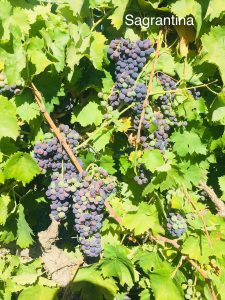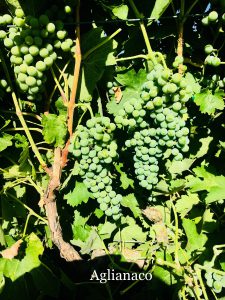Embracing Our Roots: Making a Traditional Italian-Styled Wine from California Grapes
Very few locations in the world have such a long standing tradition for making fine wines as Italy. They are famous not only for their superior quality, but for their techniques and fervent passion for wine making. Hundreds, if not thousands, of years of experience have cultivated some of the most premier wine grapes on the planet, generating complex, benchmark wines. Winemaking has become iconic to Italian culture and the generations of Italian immigrants around the world.
While many of us may hold dreams of traveling to Italy to help create some of these wonderful wines, making it a reality was not possible, until now. Through much research into climate and grape genetics, Musto Wine Grape can now source fresh grapes from select areas of California that have climates incredibly close to the Italian Mediterranean climate, comparable soil compositions, and exact genetic clones of the vines in Italy. The grapes can be crafted into wines that bear strong resemblance to their Old World counterparts.
Musto Wine Grape proudly sources authentic Italian varietals such as Nero D’Avola, Montepulciano, and Nebbiolo from the Contra Costa region of California. This wine growing region lies in a valley that borders on the north and west side by the Suisun Bay and San Pablo Bay, respectively. The bays create a more temperate climate, with cooler days and nights that allow for gentle and even ripening of the grapes. The alluvial plains and ragged coastline created by glacier movement, is remarkably similar to that of the Italian coast. The mineral-rich, alluvial plains contribute to a complex fruit, full of sweet berry yet earthy notes, in more of an Old World style. The gravel laden and sedimentary soils created by the glacial movements creates excellent drainage for the grapevine roots, causing them to grow strong and deep. This generates a very concentrated fruit, akin to the grapes in Italy. The more concentrated fruit is an excellent candidate for extended maceration or the ripasso method, two traditional techniques in Italian winemaking. The ripasso method originated in the Veneto region of Italy as a means of creating Amarone. Grapes are partially dried, concentrating their sugars and flavors. After the drying period, grapes are then pressed, the contents added to enhance Amarone. The wizened, yet not fermented skins are then added to the processing of Valpolicello and Montepulciano, hence deriving the name “ripasso” or “passed over”. These skins add a lot of extra tannin and concentrated flavor to the must, contributing not only to flavor but to the body and mouthfeel.
Not only does the terroir of Contra Costa greatly lend itself to the more Old World profile of these varietals, but the microclimate of the area contributes as well. As previously mentioned, the Contra Costa valley is surrounded on two sides by bays which help moderate the temperature. Having more moisture in the western winds generated off of the bays, provides adequate light hydration to the plants, while still preserving the concentrated fruit. The more temperate climate allows for more even ripening of the grapes; a long a gentle growing season, similar to the Mediterranean. Mount Diablo (3,845ft) provides elevation to some of the vineyards, creating a gentle slope ideal for viticulture. Having the mountain slope will aid in drainage and sun exposure for the grapes, again creating a microclimate very similar to the Italian coast.
The beneficial conditions of the Contra Costa region as well as Suisun Valley to growing Italian varietals, gave the vineyard owners and managers much to consider upon planting. They understood the unique aspect of their growing region and worked to source the best genetic clones of the benchmark Italian varietals. Both valleys are also home to some of the premier olive groves in California, utilizing the Mediterranean-like climate for high quality production. At the Lanza-Musto Vineyards within Suisun Valley (a premier growing region contingent to Napa), the Primitivo clone of Zinfandel as well as the Brunello clone of Sangiovese were planted to yield grapes with a more traditional Italian flavor profile. These clones are direct relatives of the varietal clones planted in Italy and are pruned and trellised in a comparable style. Their yields are kept low, averaging 5-6 tons per acre, preserving a more intense, concentrated fruit with a rich, earthy character.
In Contra Costa, the Nebbiolo planted can be crafted into a traditional Barolo style wine, renowned as one of the greatest Italian red wines. The Nero D’Avola and Montepulciano varieties from this region also can be crafted into more traditional Italian styled wines, often complimented with traditional Italian derived yeast strains such as BM45, BM 4×4, and BRL97. These yeast strains have been isolated from long established wineries in Italy and propagated for commercial distribution by top yeast researching universities in Italy such as the University of Torino. The use of these strains with the grapes of these growing regions can bring a truly Italian winemaking experience into your winery and the Italian passion for winemaking into your heart.
by the Winemakers at Musto Wine Grape











Recent Comments